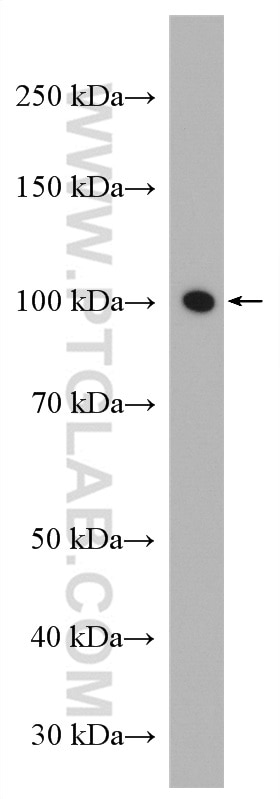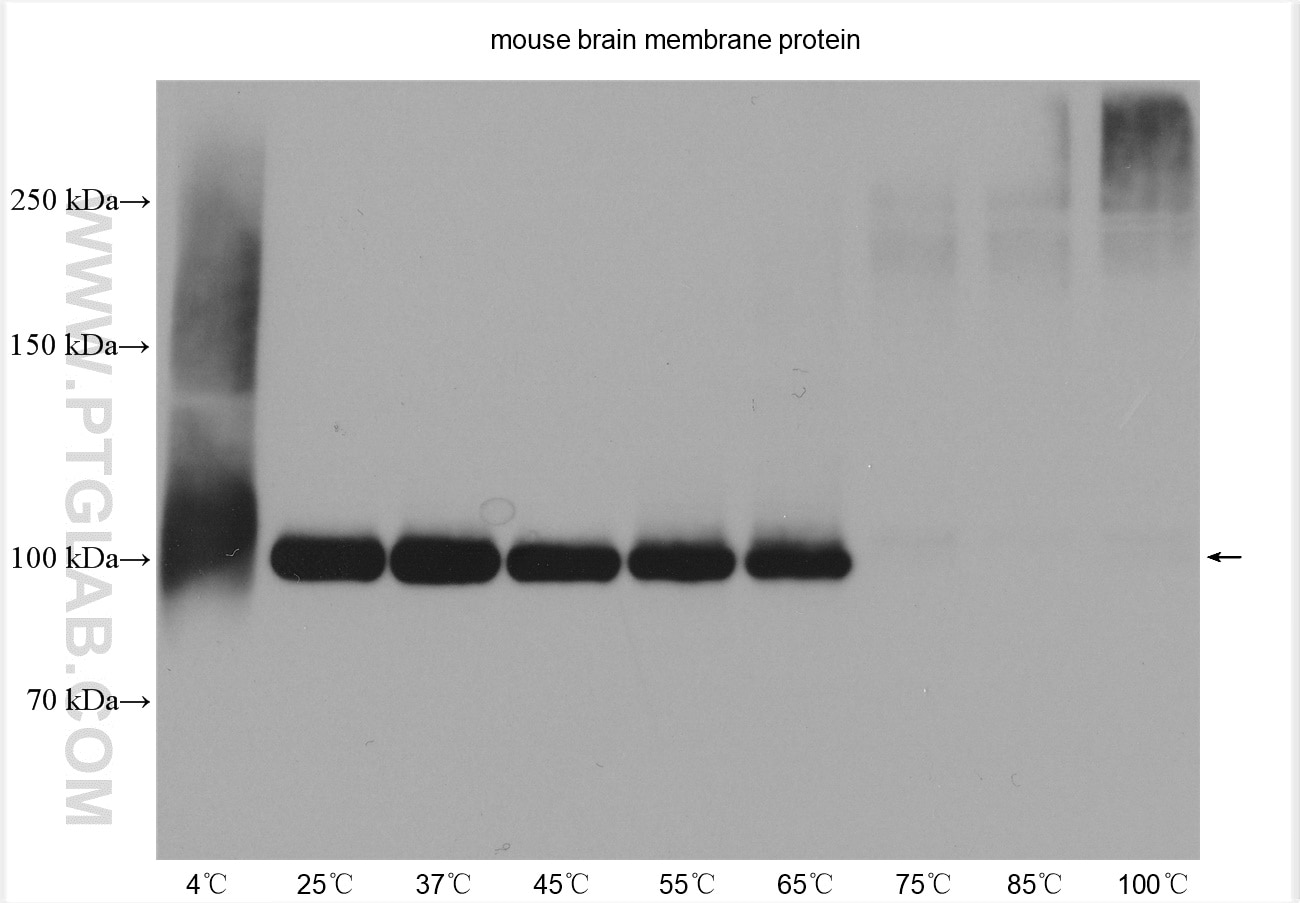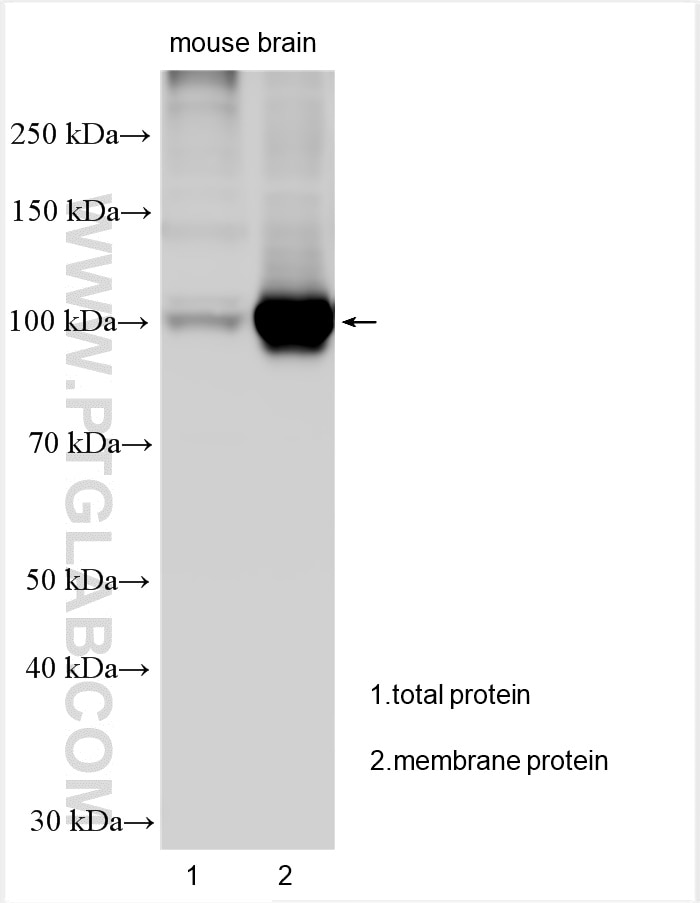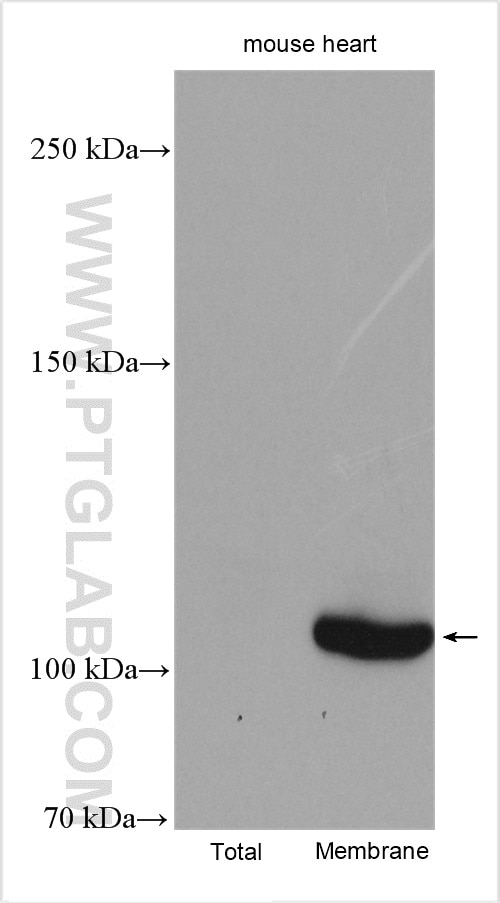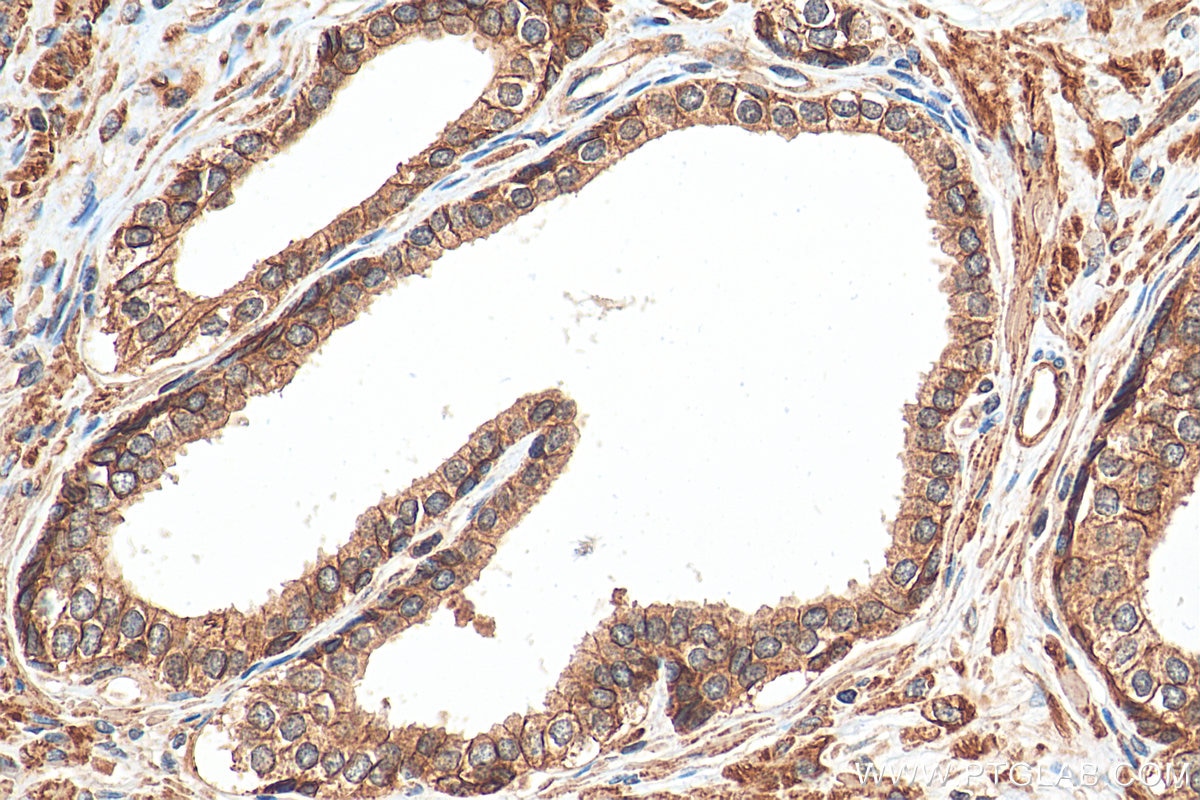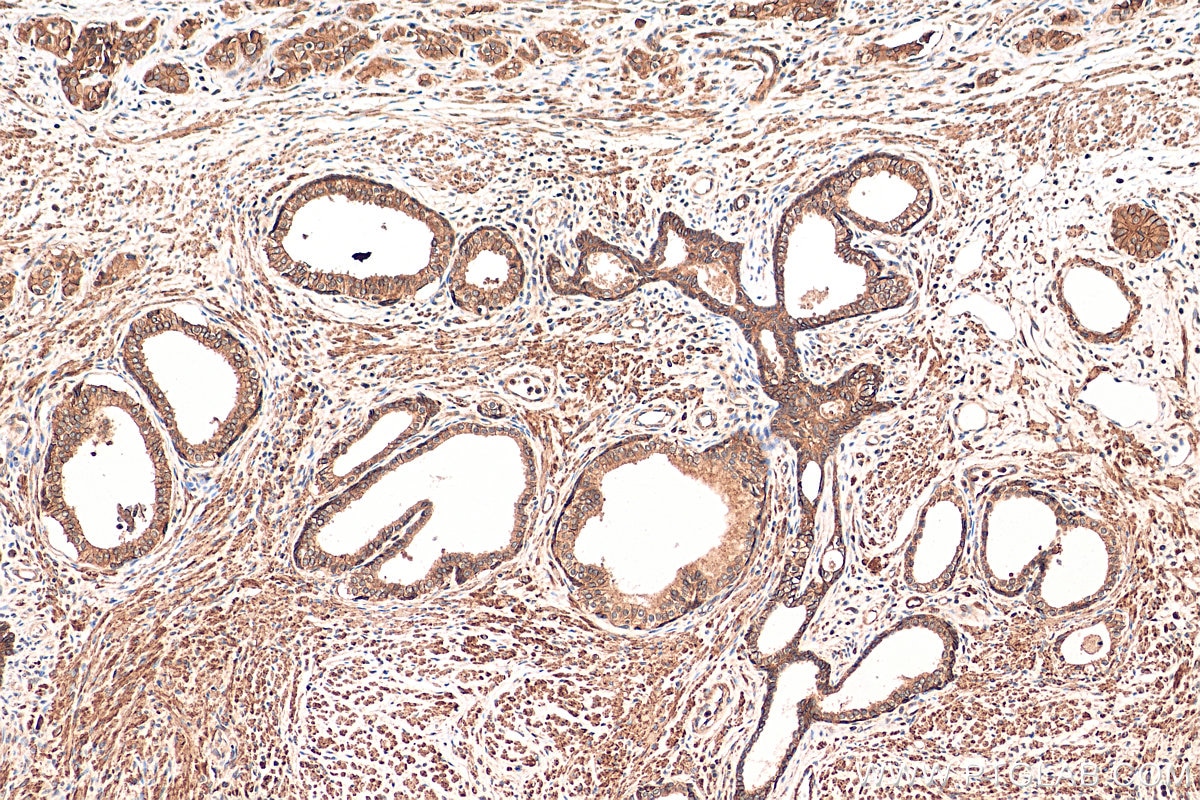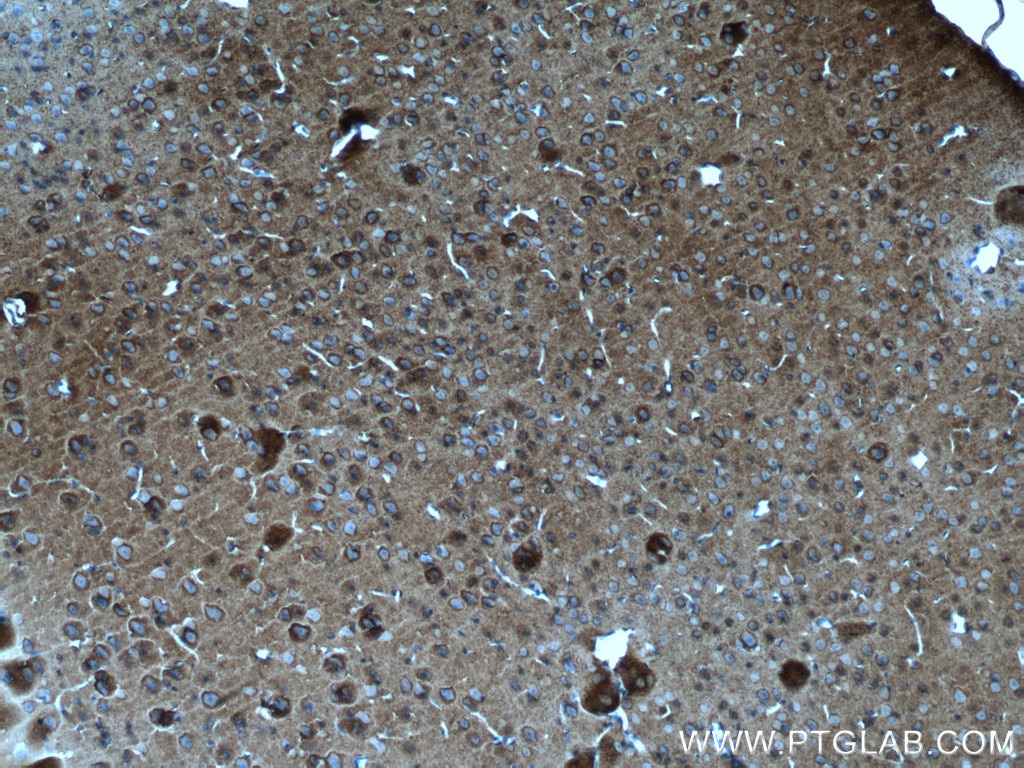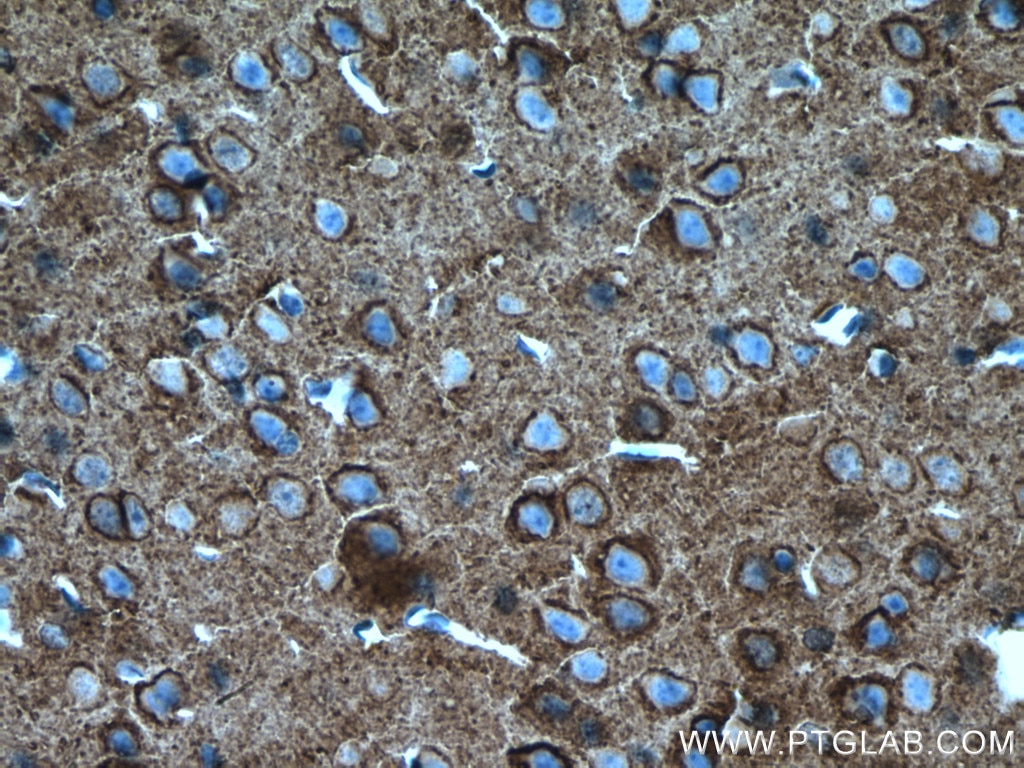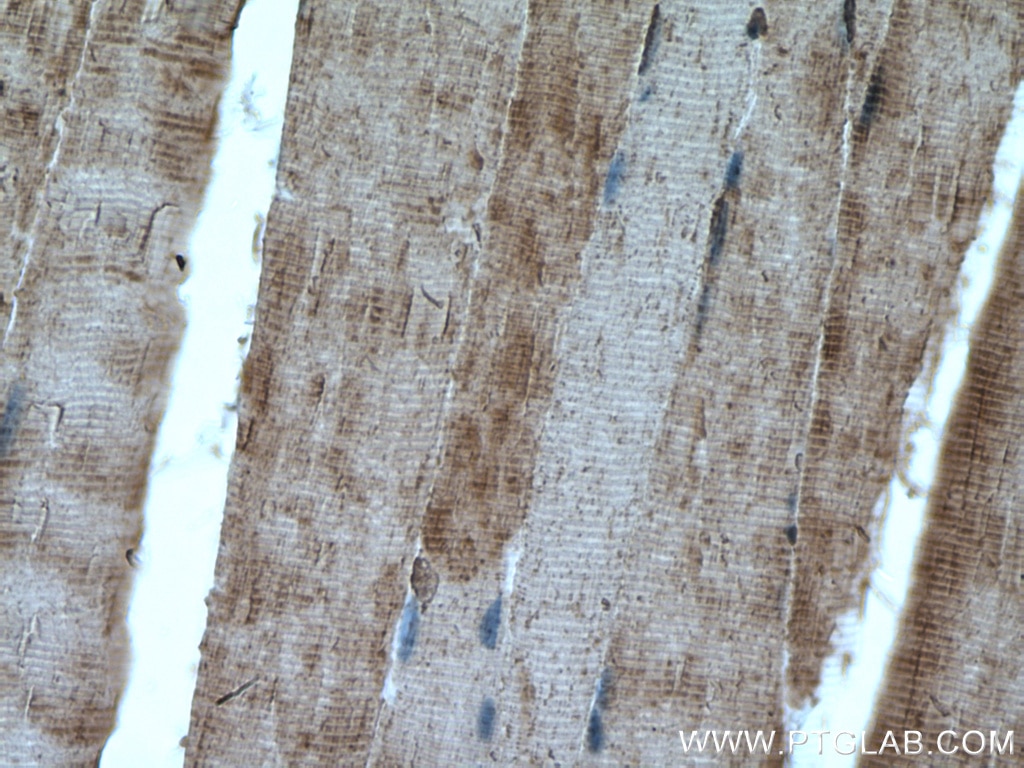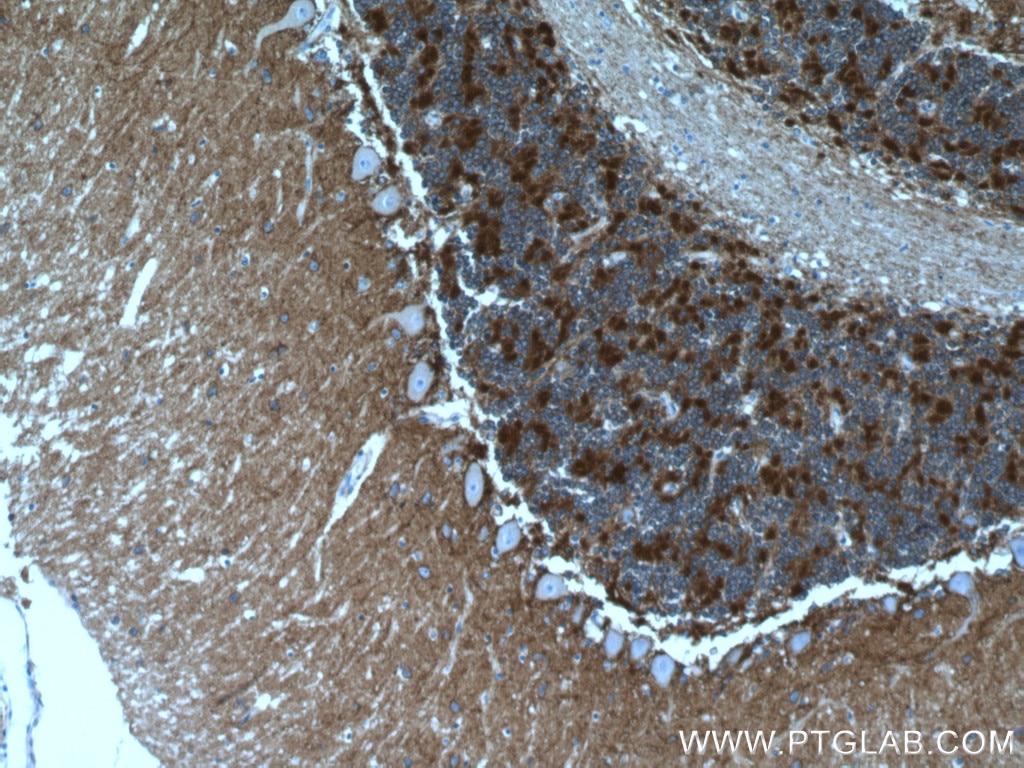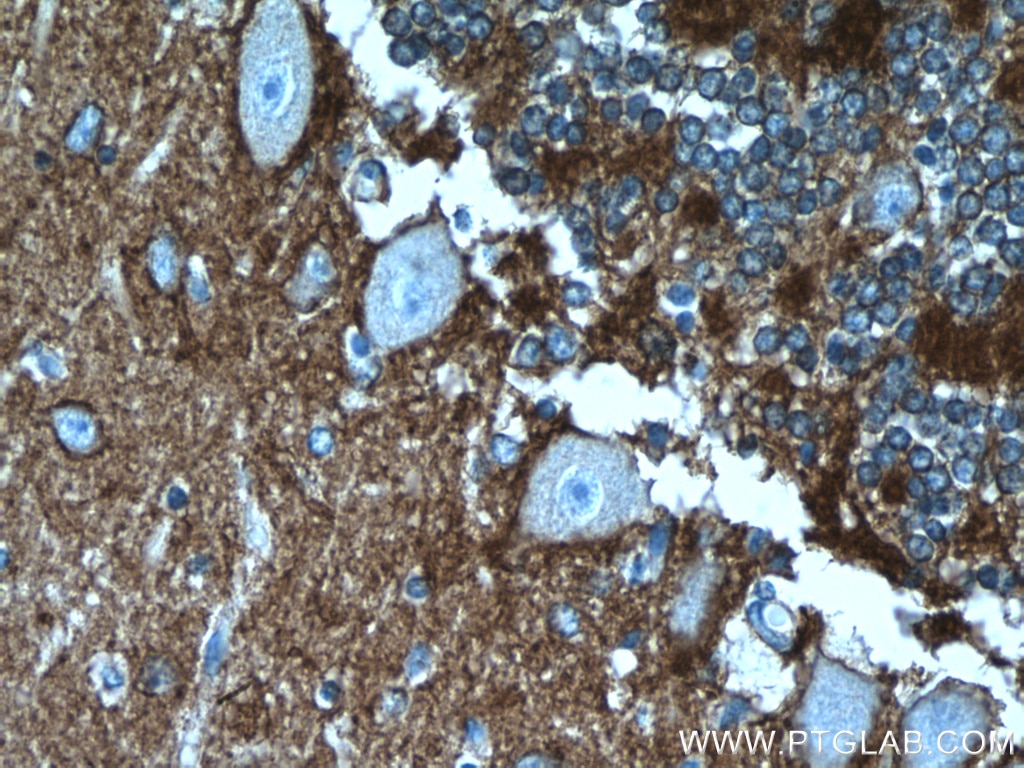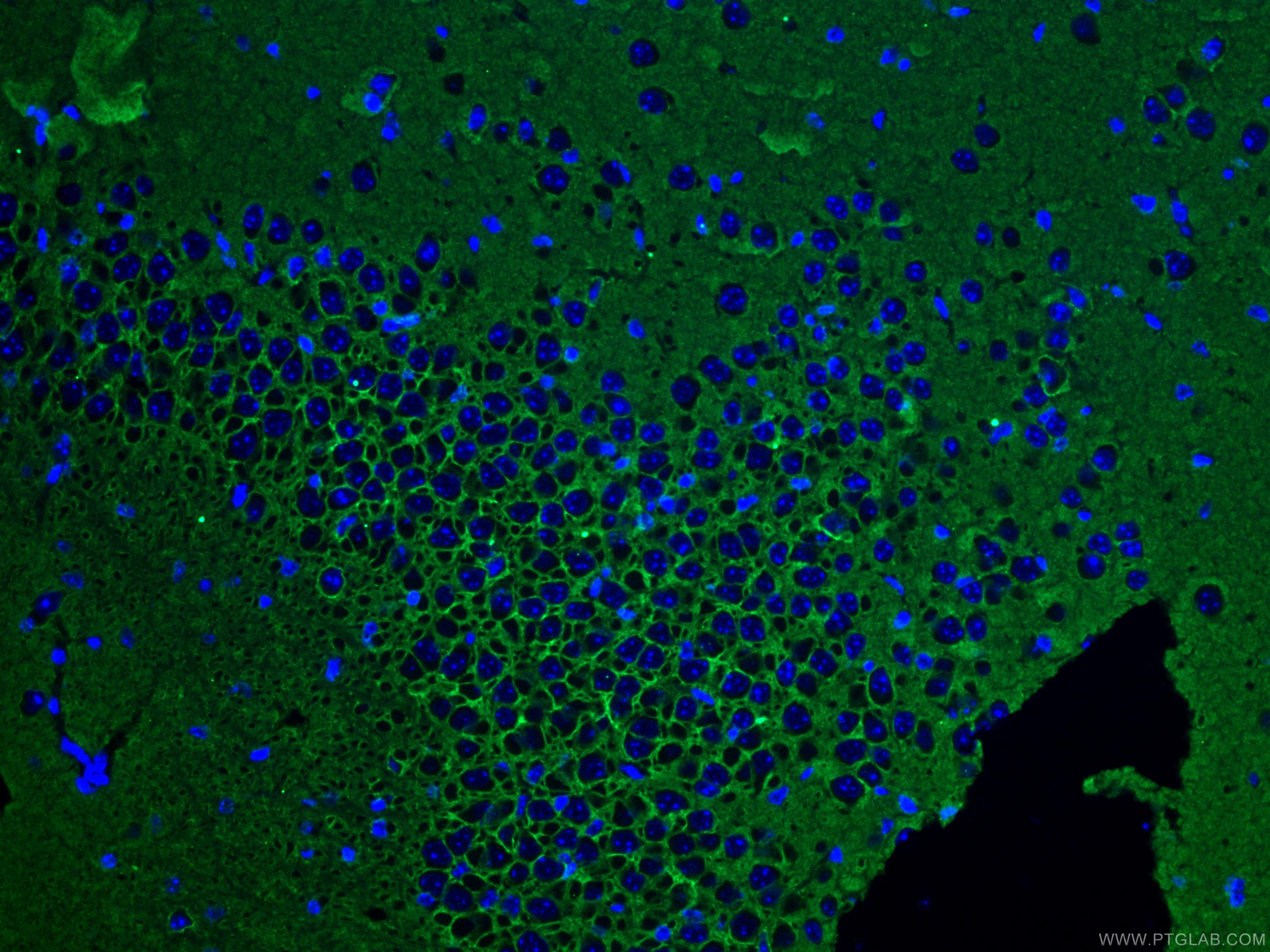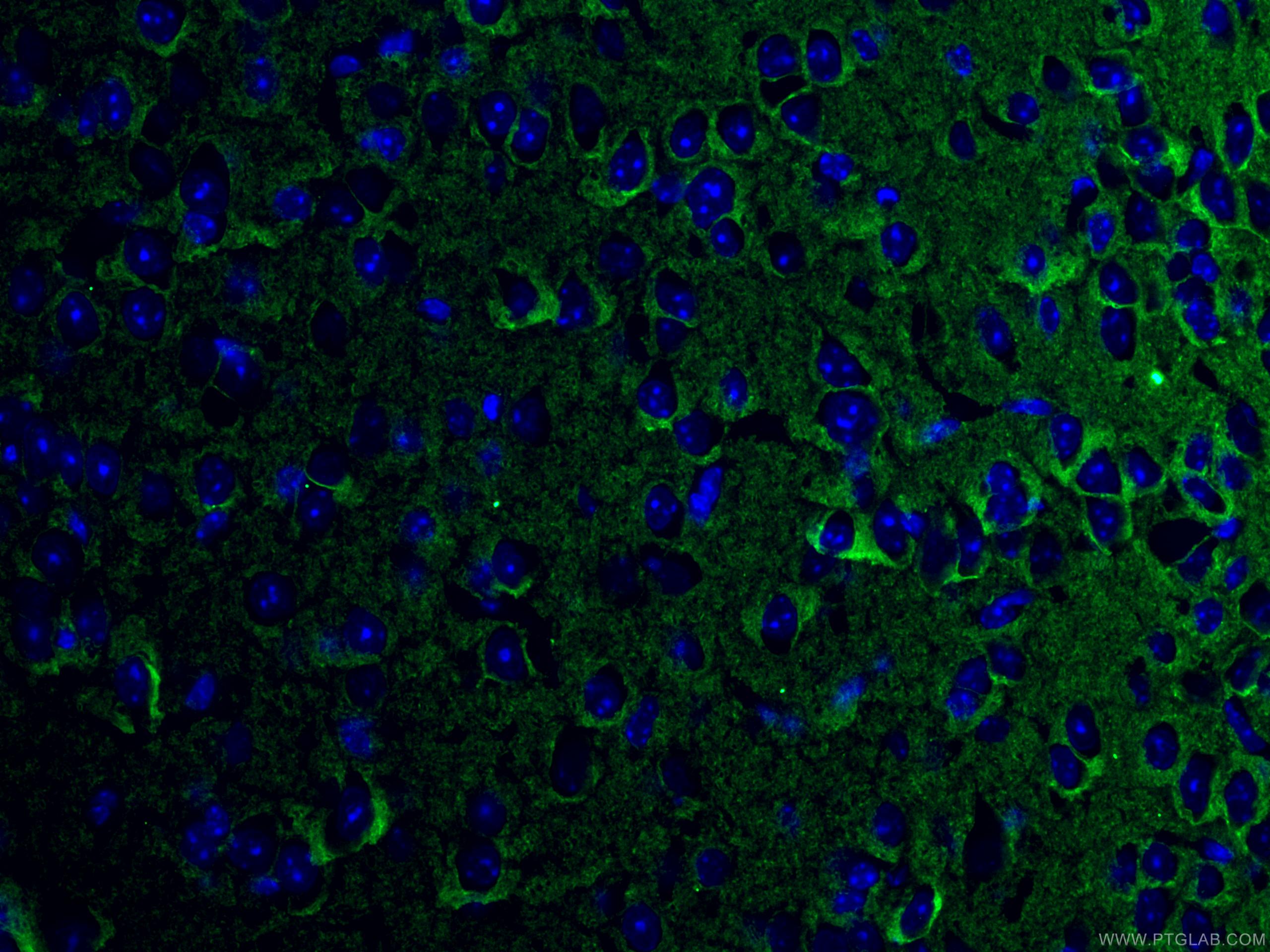ATP1A3 (C-terminal) Polyklonaler Antikörper
ATP1A3 (C-terminal) Polyklonal Antikörper für WB, IHC, IF-P, Indirect ELISA
Wirt / Isotyp
Kaninchen / IgG
Getestete Reaktivität
human, Maus, Ratte
Anwendung
WB, IHC, IF-P, Indirect ELISA
Konjugation
Unkonjugiert
Kat-Nr. : 10868-1-PBS
Synonyme
Geprüfte Anwendungen
Produktinformation
10868-1-PBS bindet in WB, IHC, IF-P, Indirect ELISA ATP1A3 (C-terminal) und zeigt Reaktivität mit human, Maus, Ratten
| Getestete Reaktivität | human, Maus, Ratte |
| Wirt / Isotyp | Kaninchen / IgG |
| Klonalität | Polyklonal |
| Typ | Antikörper |
| Immunogen | ATP1A3 (C-terminal) fusion protein Ag1313 |
| Vollständiger Name | ATPase, Na+/K+ transporting, alpha 3 polypeptide |
| Berechnetes Molekulargewicht | 113 kDa |
| Beobachtetes Molekulargewicht | 100-113 kDa |
| GenBank-Zugangsnummer | BC015566 |
| Gene symbol | ATP1A3 |
| Gene ID (NCBI) | 478 |
| Konjugation | Unkonjugiert |
| Form | Liquid |
| Reinigungsmethode | Antigen-Affinitätsreinigung |
| Lagerungspuffer | PBS only |
| Lagerungsbedingungen | Store at -80°C. 20ul Größen enthalten 0,1% BSA. |
Hintergrundinformationen
ATP1A3 participates in the catalyticing hydrolysis of ATP and the exchanging of sodium and potassium ions across plasma membrane. The catalyticing activity mode is ATP + H2O + Na+(In) + K+(Out) = ADP + phosphate + Na+(Out) + K+(In). It has been published that the neurologic disorders rapid-onset dystonia-parkionsonism (RDP), alternating hemiplegia of childhood (ACH) and CAPOS syndrome (cerebellar ataxia, areflexia, pes cavus, optic atrophy and sensorineural hearing loss) are all related with the mutation of ATP1A3. There are other reports suggest that early life epilepsy and episodic apnea revealing are potentially associated with the mutation of ATP1A3 as a result of impairment of Na+/K+ homeostasis. This antibody is generated against the C-terminal region (665-1013aa) of ATP1A3 and detects the band around 100-113 kDa in SDS-PAGE.(PMID: 30097153, 20301294, 29922587)
